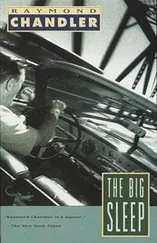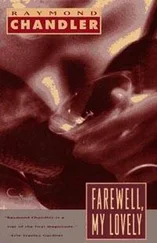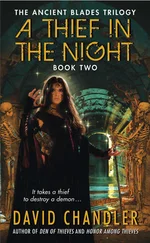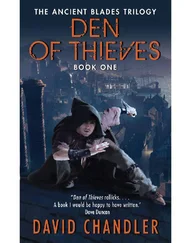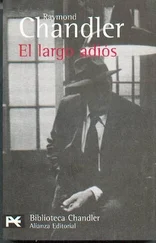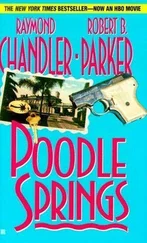Even in the absence of rhyme schemes or syntactical end-stopping, therefore, Milton’s “adventurous song” begins by reinforcing the iambic pentameter norm. This means that we can register, not just on the page but also in our ears, the forward push beyond the end of a given line, an effect known as enjambment . A relatively strong instance of enjambment occurs when the line break falls between a transitive verb and the direct object that it calls for. As noted above, “inspire / That shepherd” is one such case. “Pursues / Things” is another. Slightly less strong is the enjambment across the line break when the verb and direct object are inverted: “What in me is dark / Illumine.” Sometimes, even when there is enjambment across a line break without any closing punctuation, Milton continues things in such a way as to give a line a kind of sense in itself, within or apart from the overall syntax. The very opening line of the poem works this way. Despite the forward push of the enjambment—“the fruit / Of that forbidden tree”—it is possible to read in the opening line by itself a full announcement of this epic poem’s subject matter: “man’s first disobedience and the fruit.” That is, its fruit, the fruit of that disobedience. It is after all the case that Paradise Lost goes on to deliver an account not only of the motives and circumstances of Adam and Eve’s sin, but also its far-reaching consequences: not only the loss of paradise, but also all the implications of original sin, including, by a wondrous mystery, the eventual redemption of that sin by Jesus Christ, the “greater man” whose coming is foretold to Adam and Eve in the final books of the poem. 49
The kinds of effects that Eisenstein finds in Milton’s verse recall his discussion of Dickens’ fiction, even closer to home for this filmmaker, whereby an image seems to linger from one scene to another, even as the sense of words does across line breaks in Milton. Not all of the rhythmic and formal features that criticism reveals in Paradise Lost , or in Dickens’ novels, have close analogues with cinema, and not even Milton’s opening sequence of juxtapositions, which I have described as Eisensteinian montage effects, are straightforwardly analogous to montage in cinema. 50The point is rather that the formal effects based in repetition and variation that govern the literary arts and the screen arts are alike traceable in a critical analysis that enriches our experience of both.
I noted at the start that the art of doing criticism has been around for a long time and is something we are not likely to do without anytime soon. I suggested that the kinds of critical discussion that have been staged within popular cinema in recent decades amply attest to that point. Though this is a book that means, finally, to help students of literature and cinema (students in the broadest sense) to think and write well about what they find in their reading and viewing, I hope at all points to preserve the sense of vital connection with the kind of issues that Randal and Dante argue about in Clerks , the kind of issues that any number of readers of this book might find themselves arguing about after an evening of reading or viewing. In Dante and Randal’s exchange, we have a fine example of Mencken’s critical exuberance. It is not only something wonderful to behold. It is even more wonderful to undertake, to do ourselves. How indeed could we ever imagine doing without it?
1 1.David Hume, “Of the Standard of Taste,” Four Dissertations (London: A. Millar, 1757), pp. 216–17.
2 2.William Wordsworth, “The Tables Turned,” Selected Poems, ed. John O. Hayden (New York: Penguin, 1994), p. 65.
3 3.Wayne C. Booth, Critical Understanding: The Powers and Limits of Pluralism (Chicago: University of Chicago Press, 1979), p. xi.
4 4.Marjorie Garber, The Use and Abuse of Literature (New York: Anchor Books, 2012), p. 77.
5 5.Terry Eagleton, How to Read a Poem (Malden, Mass.: Blackwell, 2007), p. 1.
6 6.See Matthew Arnold, “The Function of Criticism at the Present Time,” Essays in Criticism (London: Macmillan and Co., 1865), pp. 1–42.
7 7.T. S. Eliot, “Introduction,” The Use of Poetry and the Use of Criticism, 2nd edition (Cambridge, Mass.: Harvard University Press, 1964), p. 30.
8 8.See I. A. Richards, Practical Criticism: A Study of Literary Judgment (New Brunswick, NJ: Transaction Publishers, 2004 [1929]); hereafter abbreviated PC. Recent research into Richards’ classroom notebooks suggests a somewhat different picture of his actual pedagogy than what he offers in his famous book: see Rachel Sagner Buurma and Laura Heffernan, The Teaching Archive: A New History for Literary Study (Chicago: The University of Chicago Press, 2021), pp. 66–106.
9 9.In this effort, I follow the lead of Raymond Williams’ sustained response to the work of Richards. See my “I. A. Richards and Raymond Williams: Reading Poetry, Reading Society,” Critical Inquiry, vol. 46, no. 2 (Winter 2020): 325–52.
10 10.William Carlos Williams, “This Is Just to Say,” in The Norton Anthology of Poetry, ed. Margaret Ferguson et al. (New York: Norton, 2004), p. 1274.
11 11.One modern source for this idea of aesthetic estrangement in criticism is an early essay by the Russian Formalist critic Victor Shklovsky, “Art as Technique,” in Russian Formalist Criticism, trans. Lee T. Lemon and Marion J. Reis (Lincoln, NE: The University of Nebraska Press, 1965), pp. 3–24, but it can be traced back Wordsworth and Coleridge and their Romantic experiments in poetry: “The principal object, then, proposed in these Poems was to choose incidents and situations from common life, and to relate or describe them, throughout, as far as was possible in a selection of language really used by men, and, at the same time, to throw over them a certain colouring of imagination, whereby ordinary things should be presented to the mind in an unusual aspect.” Preface to Lyrical Ballads, in The Prose Works of William Wordsworth, ed. W. J. B. Owen and Jane Worthington Smyser, vol. 1 (Oxford: Clarendon Press, 1974), p. 130.
12 12.Emily Dickinson, The Complete Poems of Emily Dickinson, ed. Thomas H. Johnson (Cambridge, Mass.: Belknap, 1960), p. 1377.
13 13.William Carlos Williams, “The Red Wheelbarrow,” in The Norton Anthology of Poetry, p. 1274. See Williams’ essay on Marianne Moore in William Carlos Williams, Imaginations, ed. Webster Schott (New York: New Directions, 1970), p. 317.
14 14.Gwendolyn Brooks, “The Bean Eaters,” The Bean Eaters (New York: Harpers, 1960), p. 16.
15 15.W. H. Auden, “In Memory of W. B. Yeats,” in The Norton Anthology of Poetry, p. 1472. William Wordsworth, “Preface” to Lyrical Ballads, in Prose Works 1:130.
16 16.Cited in A. O. Scott, Better Living through Criticism: How to Think about Art, Pleasure, Beauty, and Truth (New York: Penguin, 2016), p. 18.
17 17.For an account of how some of William Blake’s short lyrics carry out analysis and judgment on their readers, see my An Archaelogy of Sympathy (Chicago: The University of Chicago Press, 2017), pp. 269–77.
18 18.See Ronald S. Crane et al., Critics and Criticism: Essays in Method, ed. Ronald S. Crane (Chicago: University of Chicago Press, 1957).
19 19.See Georg Lukács, Writer and Critic: And Other Essays, ed. and trans. Arthur Kahn (London: Merlin Press, 1970); Edward Said, The World, the Text, and the Critic (Cambridge, Mass.: Harvard University Press, 1983); The New Feminist Criticism: Essays on Women, Literature, and Theory, ed. Elaine Showalter (New York: Pantheon, 1985); Barbara Christian, New Black Feminist Criticism, 1985–2000, ed. Gloria Bowles, M. Giulia Fabi, and Arlene R. Keizer (Champaign, Ill.: University of Illinois Press, 2007).
Читать дальше

